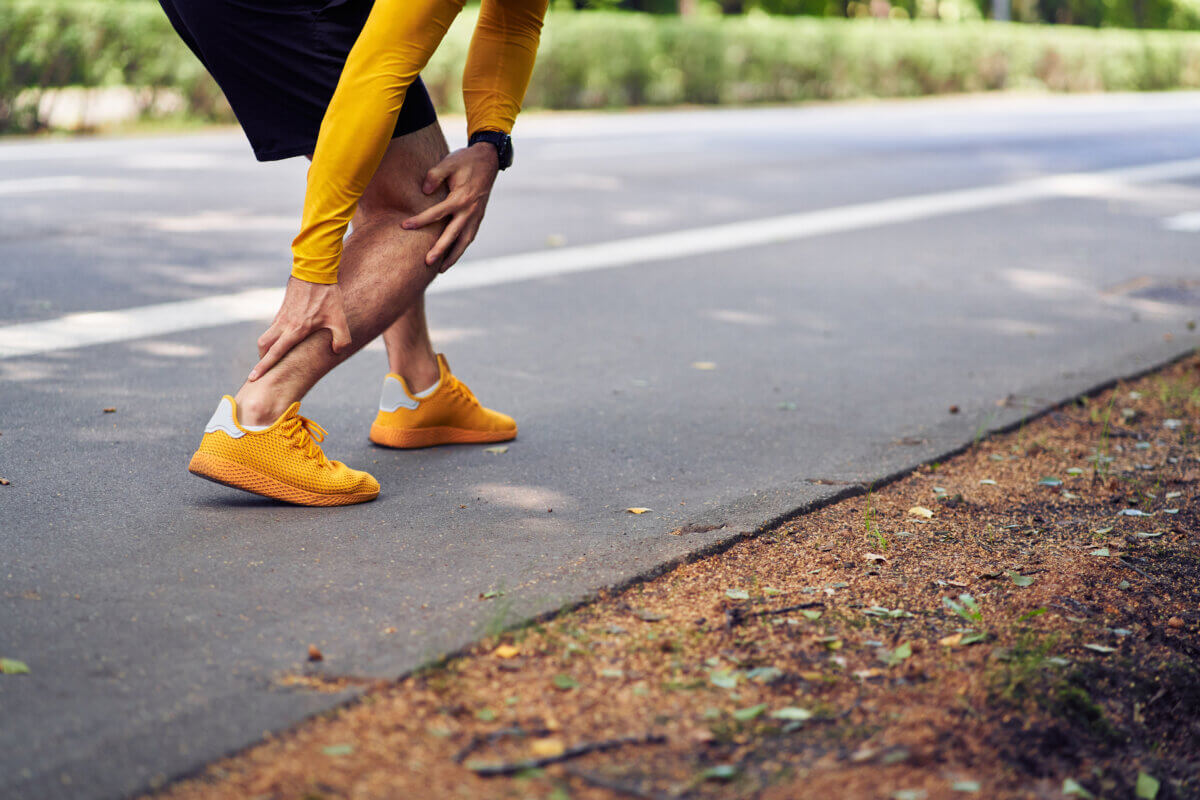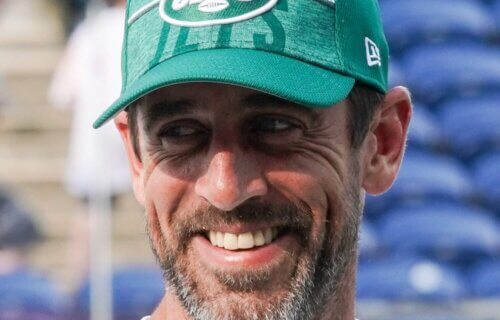NEW YORK — Jets quarterback Aaron Rodgers won’t play another game this NFL season. The former Green Bay Packers legend and future Hall of Famer was just four plays into his tenure with New York when a seemingly routine tackle ended up tearing his left Achilles tendon. The shocking injury on national television stunned the NFL world and fans nationwide. Although many serious football injuries leave open the possibility of players returning in-season, this is typically not the case with an Achilles tear — even in Week 1.
An MRI confirmed today that Aaron Rodgers officially tore his Achilles on the fourth play of his Jets’ career.
Rodgers’ season now, officially, is over. There already are questions about whether his Hall-of-Fame career is, too.
— Adam Schefter (@AdamSchefter) September 12, 2023
So, why is an achilles tear so devastating for the human body? Let’s examine Rodgers’ medical chart.
After suffering the injury on Sept. 11, an MRI the following day confirmed what doctors were able to deduce just with their eyes: a complete tear of the left Achilles tendon. The next step for the quarterback, who turns 40 in December, is likely surgery. That’s followed by months of rehabilitation to see if he can continue his playing career.
BREAKING: Aaron Rodgers suffered a complete tear of his left Achilles tendon, out for the season. (via @RapSheet + @TomPelissero) pic.twitter.com/xRy3NUESSN
— NFL (@NFL) September 12, 2023
What is the Achilles tendon?
The Achilles tendon is a strong, fibrous cord that connects the muscles of the calf to your heel bone. If the tendon is overstretched, it can tear (rupture) completely or partially. These are some characteristics of the injury:
- The injury is most common in the third to fifth decades of life — a person’s 20s, 30s, and 40s.
- It can occur with a sudden, forced, plantar flexion of the foot (bringing the toes toward the shin) or a direct blow (trauma) at the back of the ankle.
- There is a sudden onset of pain. There may also be a sensation of a “snapping” or an audible “pop.” Patients say it’s a sensation like being kicked in the back of the leg.

Is surgery the best option for an Achilles tear?
According to the National Institutes of Health, there is debate about surgical versus nonsurgical treatment. Historically, conservative management has shown a higher re-rupture rate when compared to surgical interventions. Simply put, if you let it heal on its own, there’s a higher risk that the Achilles will tear again.
However, with the advancement of rehabilitation programs, the difference in re-rupture rates between these groups is much lower (a risk difference of just 1.6%), while surgery results in higher complications such as wound dehiscence (splitting or bursting open of the wound) and infection.
Non-surgical treatments
- The initial management of an Achilles tendon rupture is rest, elevation, pain control, and functional bracing.
- Patients with significant medical comorbidities or relatively sedentary lifestyles are often recommended to avoid surgery for this injury.
Operative Management
- Several techniques for repairing an Achilles tendon exist, but they all involve the reapproximation (the closing and suturing) of the torn ends of the tendon.
- Sometimes, parts of other tendons in the area are used for reinforcement.
What does the recovery process look like?
For surgical patients, rehabilitation exercises typically begin two to four weeks post-op. Post-immobilization therapy consists of exercise, including ankle range of motion exercises, resistive and progressive strengthening exercises, isometric exercises, cardiovascular exercises, and balance exercises as appropriate.
Exercise focus is typically low-impact for the first six months, with high-impact exercises incorporated after six months, emphasizing a return to sport as appropriate. In Rodgers’ case, that would be sometime in March or April of 2024, well after the end of the 2023 NFL season and playoffs.
There could also be leg-strengthening complications for a professional athlete like Rodgers. Data has shown a need for a heavy focus on calf strengthening within the first year of injury, as a reduction in strength gain potential has been demonstrated beyond the one-year post-injury date.

Can Aaron Rodgers return at full strength?
While active patients and recreational athletes often return to normal activity levels and work following nonoperative management or surgery for these injuries, high-level professional athletes often report inferior results when they return to the playing field, regardless of their treatment plan.
A 2017 study from the American Journal of Sports Medicine reported professional athletes’ follow-up performance (NBA, NFL, MLB, and NHL) at one and two-year follow-ups after Achilles surgeries performed between 1989 and 2013:
- >30% failure to return to play
- Athletes returning noted (at 1-year follow-up) playing fewer games, less overall playing time, and lower overall playing performance
- Athletes able to return to the field by the two-year follow-up showed no statistically significant difference in their performance level
Overall, researchers say that athletes demonstrating the ability to return to the playing field in year one post-treatment should expect to achieve continuous improvement in their baseline performance as time goes by and they head into the following season.
So, what does that mean for the future Hall of Famer Rodgers?
Based on the study results, it will be two years before the Jets know how much ability Rodgers can recover after this injury. However, he may never return to pre-injury performance.
That would mean the 2024 season could be a difficult challenge with diminished performance. The 2025 season may be better — if Rodgers wants to keep going at the age of 42. That conversation is one that analysts and experts will almost certainly be having along his road to recovery.
Can you prevent an Achilles tear?
To prevent an Achilles tendon rupture, adequate warming and stretching before physical activity is the best course of action.
Source: National Institutes of Health
You might also be interested in:
- Best NFL Quarterbacks Of All Time: Top 5 Legends According To Sports Experts
- Best Packers Players Of All Time: Top 5 Green Bay Athletes, According To Experts
- Worst NFL Injuries Of All Time: Top 5 Hard-To-Watch Moments In Football, According To Experts


I severed my Achilles in March 2022 and I’m still walking with a cane.
Hello Chris. Sorry for your injury. Did you get surgery to repair it
Bad Karma. You get brittle as you age, this should teach the NFL teams not to invest in old players.
I’m a life long Packer Fan. I bought the NFL Ticket for the 1st time this year so I could watch the Jets Games.
No Refunds!
You couldn’t find an Orthopaedic Surgeon to comment on the injury. This is written by a family doctor who has never done surgery on an ankle in her life. Most of what she says is accurate but it would have meant so much more coming from an expert who does surgery. Very poor!
Fred, My career includes a position as assistant surgeon to a hand and foot surgeon. I know my way around an ankle. Thank you for your comment.
At least he didn’t show decline on the field like so many others who won’t give into father time. He has had a great career, and has owned my Cowboys and Bears.
I saw the muscle pop up on the injured leg video. (Little scary to watch). It appears to have snapped like a rubber band. I’m still a little confused on one item, is the muscle completely separated from the heal of the foot. If so, how is it possible to grow back on its on, without
surgery re-attachment.
Thank you for your comment. The tendon does not separate from the muscle or the heel bone. The tendon itself ruptures. In surgery, the two fragmented ends are sewn together. Without surgery, the other structures of the ankle, and immobilizing the ankle, keeps the fragmented ends roughly in contact. Hopefully, they grow together, although they are not always stable and reinjury rate is higher (tears again). Not doing surgery is for people who are either too unhealthy or poor candidates for surgery, or if they are very sedentary.
First I would like to say how sorry we are ,the wife and I, that this happened to Aaaron Roger’s. All so to all the Jets players like you we were excited about this season. My wife is bed ridden and she loves watching Aaaron Rogers play. We have watched 53 super bowls together. So you know how excited we were when Aaron came to the Jets. We have the 50 inch TV set up in front of her bed waiting to cheer the jets all the way to the super bowl. God be with you Aaron.
I’m sorry your plans didn’t work out, I’m sure Aaron is sorry, too. I appreciate that you graciously wish him well.